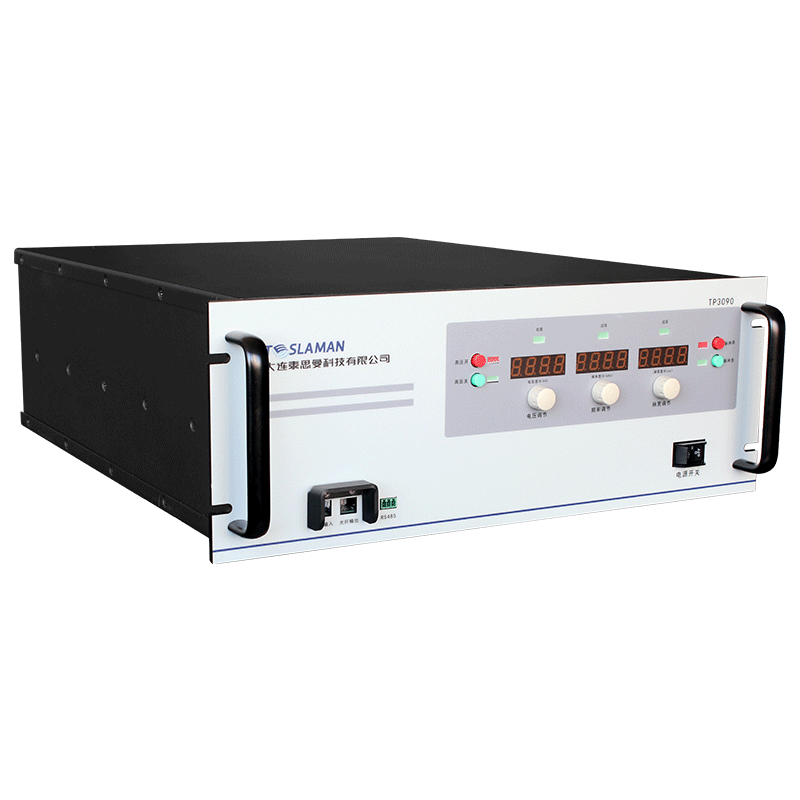Application of High-Voltage Power Supplies in Nondestructive Testing
Nondestructive testing (NDT) serves as a core technology for industrial quality control and equipment safety assessment, enabling precise detection of internal structures and defects without damaging the tested objects. In mainstream NDT methods such as ultrasonic phased array testing, X-ray imaging, and eddy current testing, high-voltage power supplies act as crucial components for energy supply and signal excitation, directly determining the sensitivity and reliability of detection. To meet the specific requirements of different testing scenarios, high-voltage power supplies have continuously innovated in output characteristics, waveform modulation, and intelligent control, providing strong support for the development of NDT technologies.
1. High-Energy Stable Output in X-Ray Testing
In the field of X-ray nondestructive testing, high-voltage power supplies are required to provide acceleration voltages ranging from tens of thousands to millions of volts for X-ray tubes, exciting high-energy electron beams to bombard the target material and generate X-rays. To ensure imaging clarity and penetration ability, the power supply must exhibit extremely high stability and ripple suppression capabilities. By combining high-frequency inverter technology with high-voltage voltage-multiplying rectifier circuits, the output voltage ripple can be controlled below 0.1%, meeting the uniformity requirements of X-ray intensity for micron-level defect detection. Meanwhile, by monitoring the tube current and temperature in real time, the power supply can automatically adjust output parameters, preventing lifespan degradation of the X-ray tube caused by overheating or voltage fluctuations. In high-precision scenarios such as aerospace component inspection, this increases the defect detection rate to over 98%.
2. Pulse Excitation Optimization for Ultrasonic Phased Array Testing
Ultrasonic phased array testing relies on high-voltage pulse power supplies to excite arrayed ultrasonic transducers, enabling directional focusing and scanning of ultrasonic waves. To improve detection resolution, the power supply needs to output pulse signals with short rise times and high peak powers. Designs based on avalanche transistor switching technology and pulse transformer voltage boosting can generate narrow pulses with amplitudes up to 1000V and pulse widths as low as 50ns, effectively enhancing the bandwidth and penetration of ultrasonic signals. Additionally, by adjusting the pulse repetition frequency and amplitude, the power supply can adapt to different thicknesses and materials of the tested objects. In pipeline weld inspection, this improves the positioning accuracy of tiny cracks to 0.1mm, increasing the detection efficiency by more than three times compared to traditional ultrasonic testing.
3. High-Frequency Signal Modulation for Eddy Current Testing
Eddy current testing identifies defects by analyzing changes in the induced eddy currents on the surface of conductors under alternating magnetic fields. High-voltage power supplies are required to provide stable high-frequency excitation signals. To reduce the impact of the skin effect, the power supply adopts direct digital frequency synthesis (DDS) technology, enabling continuous frequency adjustment within the range of 10kHz 1MHz, and stabilizes the signal amplitude above 500V through power amplifiers. Combined with phase-locked loop (PLL) technology, the power supply can compensate for frequency drift caused by temperature and load changes in real time, ensuring the consistency of eddy current signals. In the surface crack detection of aeroengine blades, this technology improves the detection sensitivity to the 0.05mm level, effectively guaranteeing the operational safety of critical components.
4. Intelligent Control and Multimodal Collaboration
Modern nondestructive testing often requires the integration of multiple detection techniques to enhance diagnostic accuracy, driving high-voltage power supplies towards intelligent and multimodal collaborative development. By incorporating programmable logic controllers (PLCs) and adaptive control algorithms, the power supply can automatically switch output modes according to the testing process. For example, in composite material testing, it first provides the high-voltage DC output required for X-ray testing, then switches to the pulse excitation for ultrasonic phased array testing. Moreover, the power supply supports data interaction with the testing system, feeding back parameters such as voltage and frequency to the main control unit in real time, enabling closed-loop optimization of the testing process and further improving the reliability and repeatability of test results.
The in-depth application of high-voltage power supplies in the field of nondestructive testing not only promotes the development of testing technologies towards high precision and intelligence but also provides essential guarantees for quality control in high-end manufacturing industries such as aerospace and nuclear power equipment. With the continuous emergence of new materials and processes, the performance optimization and functional expansion of high-voltage power supplies will continue to empower innovative breakthroughs in nondestructive testing technologies.




















